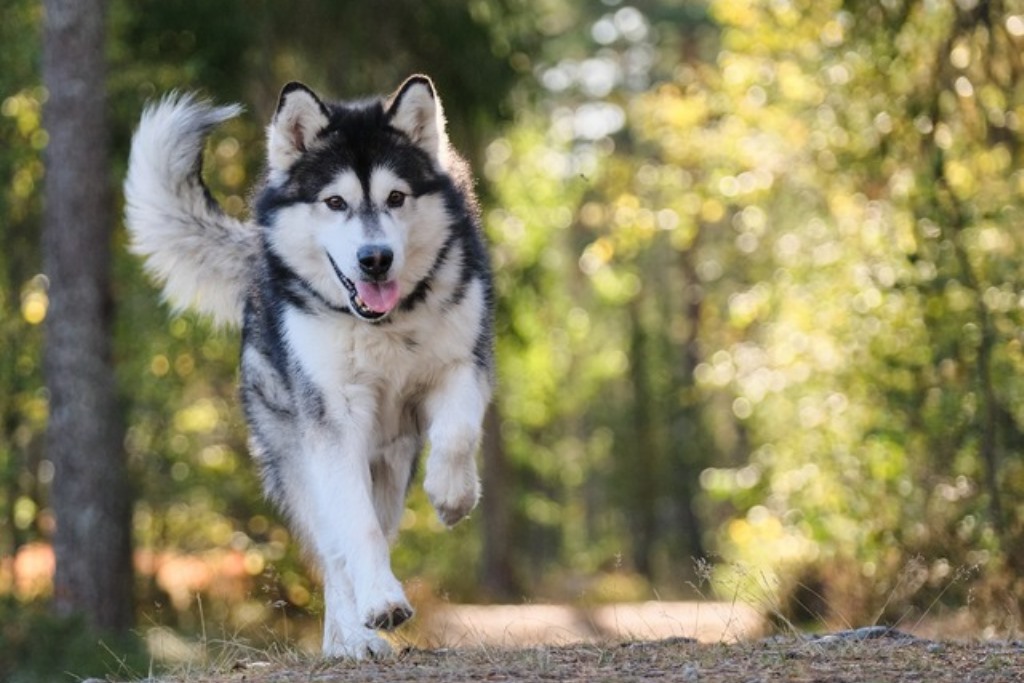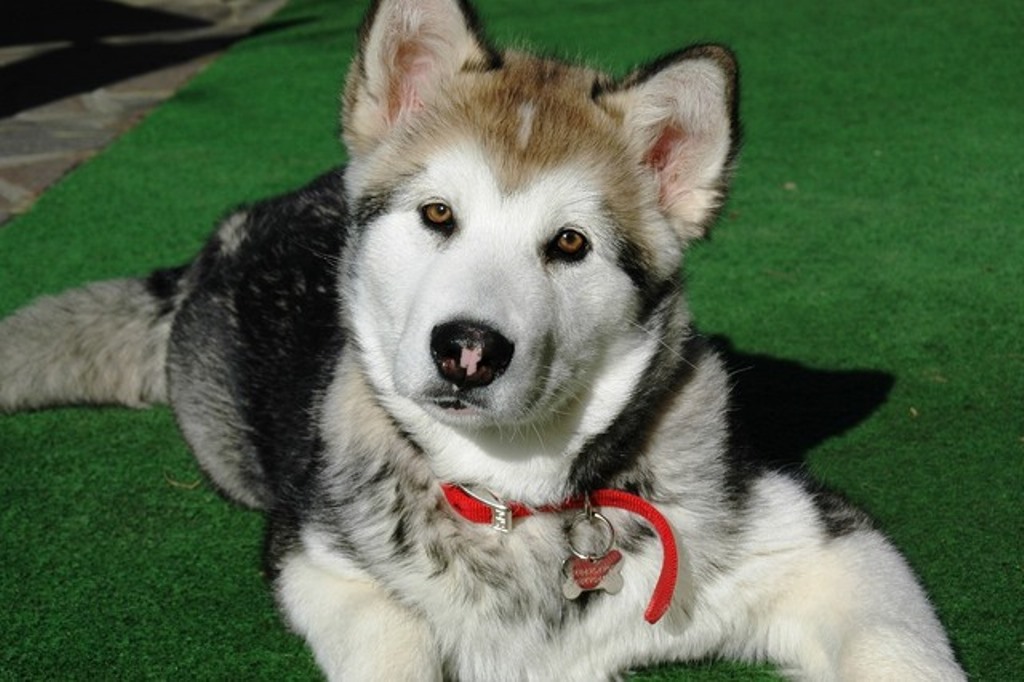
Discovering the Mighty Alaskan Malamute Dog Breed
The Alaskan Malamute dog breed is very old. It was used, and still is today, in northern countries for pulling sleds and pack animals. But because of its character, it has now also become an excellent companion dog. Its origins are unclear, but it is thought to date back more than 3000 years, when a nomadic population of Inuit stock migrated from eastern Siberia and after crossing the Bering Strait settled in north-western Alaska, in an area called Kotzebue. This population was called Mahlemiut. In the Inuit language ‘miut’ means ‘people’, literally translated it means ‘people of Mahle’.
These dogs within the population were part of the family, lived in huts, and were children's playmates, and with their thick fur they warmed the people. They were used not only to pull sleds but also to hunt seals, which were the main sustenance of these populations. In packs, they also hunted bears; they were able to surround the bear and attack it while waiting for the hunter. So this breed was preserved intact for a very long time, living in these very isolated villages.
Unfortunately, when pioneers arrived in Alaska attracted by the gold rush towards the end of the 19th century, the breed degraded considerably due to cross-breeding with dogs of other breeds. Due to the massive invasion of these territories, the balance of nature was upset, the game diminished considerably and all this led to a decimation of the natives and their dogs, which risked near extinction. Fortunately, some sledge drivers managed to save a few specimens. The breed was officially safeguarded by the United States in 1926.
Unfortunately, the Alaskan Malamute was almost decimated during the Second World War because it was recruited by the army, but fortunately, the intervention of Eva Seeley and her husband ensured that the breed recovered and the two started a breeding programme.
The Alaskan Malamute dog breed is not a very widespread breed. In Europe, the first specimens appeared in the mid-1950s, in Italy in the early 1980s, but thanks to breeders who put a lot of effort and conscientious effort into selection and who continue to do so to this day, the breed has begun to become more and more well-known.
Character of the Alaskan Malamute dog breed

The Alaskan Malamute is a calm, sociable dog, eager for relationships with humans and also for affection. It establishes a special relationship with its owner, whom it must see as its pack leader. In fact, its training requires time and patience, although it is much easier than in other specimens. Alaskans are never servile and maintain a marked independence that, especially at a young age, must be controlled.
It is not a great watchdog because it is very sociable and barks very rarely, it can be aggressive with its peers as it tends to dominate as a temperament, therefore early and firm socialisation should be considered.
With the family and especially with children he is very sweet and affectionate, he likes to play a lot, so he is an excellent companion. He needs his own space, however. He can also live in a flat, but he has to be alone as little as possible and has to go out several times a day. He loves to dig and run a lot, but you have to consider keeping him cool during the summer season in the hot hours, although he suffers from the heat less than you think when you see him.
It is an ideal companion for nature excursions, whether running, cycling or sledging. In fact, it loves the outdoors, so a garden is ideal for this dog between walks.
Appearance of the Alaskan Malamute dog breed

As an appearance, the Alaskan Malamute looks very much like a wolf, is very tough and has a powerful physique. Their body structure is vigorous, very muscular but still agile, they have a very proud bearing and a gait that is not light, but also not excessively heavy.
It is a medium to large dog, the male reaching an average of 63 cm at the withers for about 38 kg. The female slightly less. The front legs are very strong and muscular, while the hind legs are vigorous and large. The tail is covered with thick fur, carried on the back, but not rolled tightly.
The head is very similar to that of the wolf, broad and strong with a broad skull, the muzzle is large and has powerful jaws, the truffle, lips and palpebral rims are black, in red-haired specimens the truffle is brown. The eyes are almond-shaped, not very large and generally brown. The ears are small in relation to the head, are erect and well spaced, and are triangular in shape with slightly rounded tips.
The coat of the Alaskan Malamute is upright on the body, thick and hard, it also has a thick undercoat that is woolly. The length of the coat is medium. Slightly longer in various areas of the body, such as on the shoulders, neck, along the back, rump, thighs and tail.
The colours of the Alaskan's coat are many, but it is characterised by areas of white that is predominant throughout the lower part of the body and on a part of the muzzle that forms a mask. Otherwise, the colours are usually light grey, black, brown, golden and dark red.
Health and care of the Alaskan Malamute dog breed

The Alaskan Malamute is a robust and hardy breed, and has no particular health problems. It has an average life expectancy of 10 to 12 years. It is important to take care of the cleaning of the ears, to provide a balanced diet with a daily ration of good quality food, to which one or two tablespoons of oil should be added to care for the coat, and to give it plenty of exercise.
As far as coat care is concerned, these dogs do not give great trouble, just brush it once a week and in the moulting period also every day. Bathing should only be done if absolutely necessary as they are very clean dogs who clean themselves by licking their hair, and also to avoid altering the hydro-lipid layer of the skin leading to excessive dryness of the skin, favouring the onset of more or less serious problems.






















